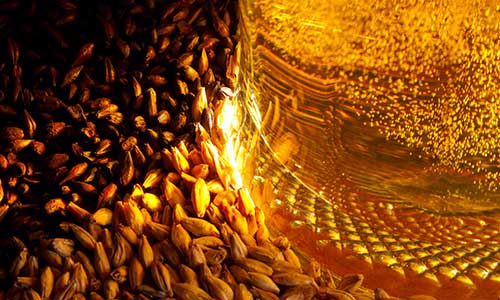Ensuring Cosmetic Safety: The Vital Role of ATNC Analysis
Cosmetics aren't just about enhancing beauty; they're about trust and safety. In the intricate dance of beauty and science, the discovery of...

Nitrosamines, such as N-Nitrosodimethylamine (NDMA), are carcinogenic compounds that can form during the drug manufacturing process and storage under certain conditions. These contaminants pose significant health risks, and their presence in medications like Ranitidine has already led to widespread recalls and regulatory scrutiny.
You might be using conventional GC-MS/MS techniques to detect these nitrosamines, but these methods can struggle with selectivity, especially in complex pharmaceutical matrices. The result? False negatives, delayed product releases, and the risk that unsafe products could reach the market—putting patients at risk and your company’s reputation on the line.

While GC-MS/MS is a widely used method for detecting nitrosamines in pharmaceuticals, it can face challenges with selectivity. Selectivity refers to the ability of a testing method to differentiate nitrosamines from other compounds and background contaminants. In complex pharmaceutical matrices, GC-MS/MS may struggle to accurately identify and quantify nitrosamines due to interference from closely eluting compounds.
When analysing by MS/MS techniques there is the potential for false negatives due to the MS/MS analysing daughter and granddaughter ions of contaminating peaks that closely elute with the compound of interest with a different parent ion. This can lead to delays in product release and impact the company's costs and reputation. Therefore, it is crucial to address the challenges faced by conventional GC-MS/MS techniques in detecting nitrosamines to ensure accurate and reliable results.

To overcome the challenges of selectivity in nitrosamine testing, innovative high-selectivity detectors, such as Ellutia’s 800 series Thermal Energy Analyser (TEA), have been developed. By integrating gas chromatography with the TEA, this significantly enhance the precision and reliability of nitrosamine identification. As the TEA is selective to only seeing nitroso compounds meaning other compounds that may interfere with other detectors won't be seen by the TEA.

The operation of the GC-TEA system by Ellutia involves separating nitrosamines within the GC column, followed by their elution into the Pyrolyser. Here, the nitrosamines decompose to release nitric oxide (NO), which is subsequently detected by the TEA after reacting with ozone. This sequence facilitates the precise quantification of the nitrosamines present.
The specificity of the TEA significantly reduces background noise and interference, common issues in the detection of nitrosamines, as it will only detect the NO molecule.
MS/MS techniques are developed by knowing both the retention time and fragmentation pattern of every analyte being detected, but how can you detect a nitrosamine for which you don’t have a standard? Solely focusing on specific nitrosamines can overlook unforeseen and unidentified nitrosamines. Employing a specialised detector for nitroso compounds guarantees that each nitrosamine elicits a distinct signal, allowing any unexpected findings to be highlighted for further examination.

Ellutia’s 800 series Thermal Energy Analyser (TEA) represents a significant advancement in the field of nitrosamine testing, offering high selectivity that surpasses conventional methods. By adopting this innovative technology, pharmaceutical manufacturers can ensure the safety and compliance of their products, ultimately protecting consumer health and maintaining regulatory standards.
If you’re facing challenges with nitrosamine detection and want to explore how high-selectivity methods like the TEA can enhance your testing processes, we’re here to help. Reach out to us today to discuss a tailored solution that meets your specific needs.

Cosmetics aren't just about enhancing beauty; they're about trust and safety. In the intricate dance of beauty and science, the discovery of...

The issue of NDMA contamination in pharmaceuticals like metformin has become an industry-wide focus due to its implications for patient safety and...

Discover the essential role of testing in beer production and how it ensures quality control throughout the process. Testing plays a crucial role in...